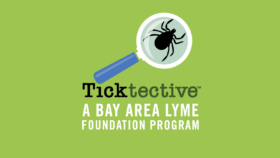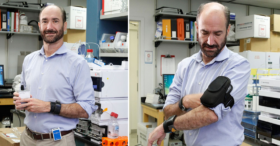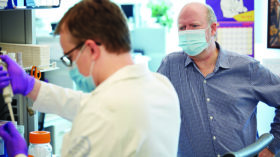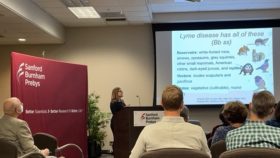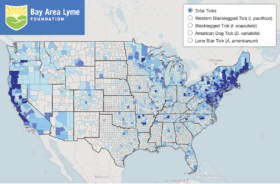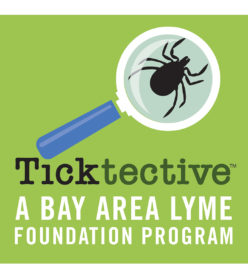By Bay Area Lyme Foundation BAL Happenings Series
Why is the human immune system so complicated? Why are Lyme and tick-borne diseases so challenging for medical scientists to understand and for doctors to treat? And what is happening in the world of Lyme disease research that may offer hope to patients suffering from the effects of Lyme and TBDs on their continually assaulted immune systems?
On November 3, Bay Area Lyme Foundation and Sanford Burnham Prebys Medical Discovery Institute jointly hosted an audience of physicians, scientists, patients, supporting family members, and medical providers in La Jolla, CA, to hear a panel of distinguished speakers address the subject of how the human immune system responds to the bacterial or viral assault of a tick-borne infection.
The San Diego event was part of Bay Area Lyme Foundation’s ongoing Distinguished Speaker Series. The Speaker Series format brings together a panel of distinguished individuals, typically including a researcher, a physician, and a Lyme patient advocate. By giving varied perspectives on topics relevant to Lyme and tick-borne diseases (TBDs), Bay Area Lyme provides a platform for the discussion of new scientific discoveries and other developments relevant to Lyme. The series also fosters community-building for patients seeking answers to the challenges of this debilitating disease.
Part of this session’s discussion explored the frustration experienced by countless Lyme patients that most medical providers and physicians are so poorly educated regarding Lyme and TBDs. “They don’t test for all types of TBDs, don’t agree on treatments, aren’t trained to recognize or treat heart problems caused by TBDs, and over-prescribe powerful immune suppressants which can be deadly for TBD patients,” criticized David Haney, PhD, biochemist, patient advocate and panelist. “San Diego physicians are under the mistaken impression that there is no Lyme disease in California, but it has been established in the state since the 1970s. People also travel, and a tick-borne infection is more than just Borrelia burgdorferi. This has been proven in multiple studies,” he added. “Academic studies show that Babesia duncani and several species of tick-borne Borrelia are more prevalent in the West than the East.”
“Traditional healthcare needs to learn to diagnose and treat tick-borne diseases,“
– David Haney, PhD
